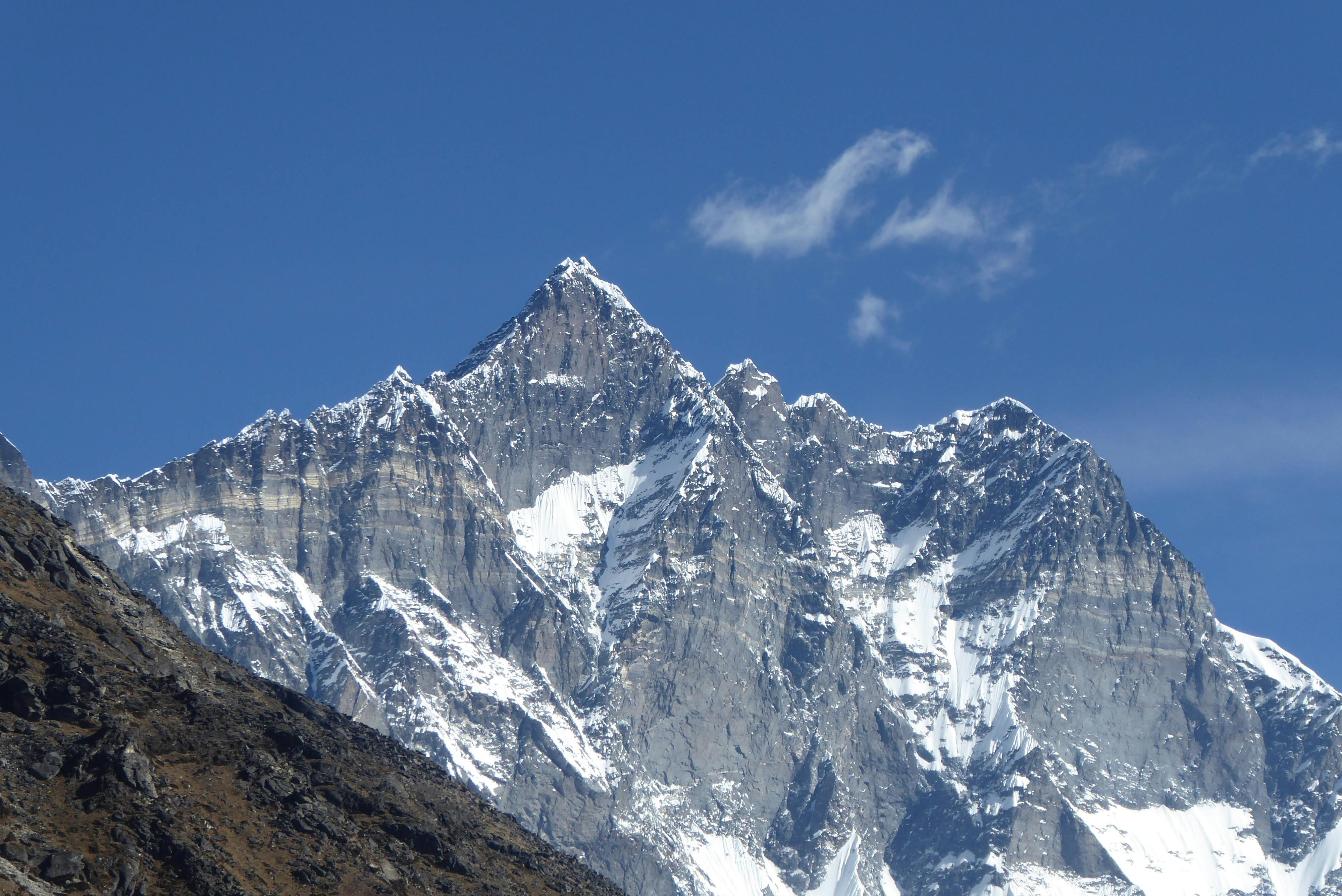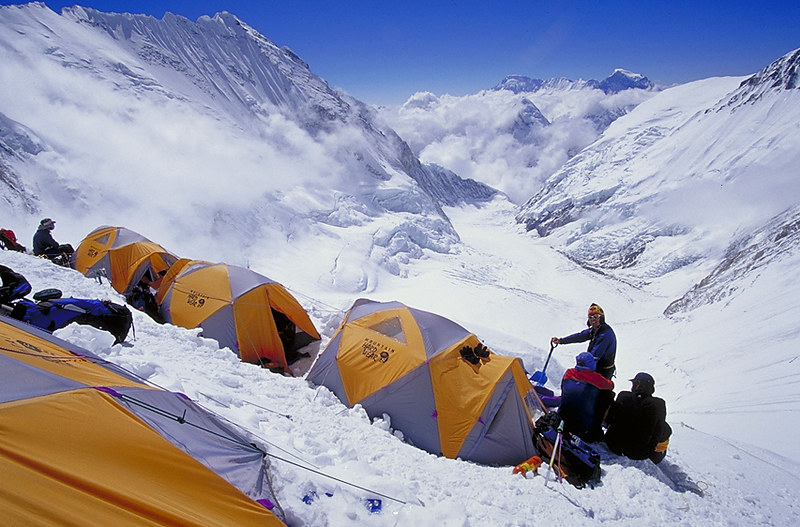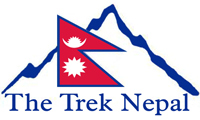Mount Everest might be the tallest mountain in the world, but Mount Lhotse doesn’t remain too far behind. Being the 4th tallest mountain in the world, Lhotse lies south of Mount Everest. Mount Lhotse expedition isn’t an easy task, though.

Mount Lhotse is 8516m tall and it is the 4th highest mountain in the world. One of the major reasons why the Mount Lhotse expedition is tough is due to the 3.2km high mountain face, along with the 2.25km wide periphery of the same.
You can go past the same route of Mount Everest; however, it is as difficult as the tallest peak. The Trek Nepal, which has been conducting Mount Lhotse expeditions for years, confirms to you the best services. Right from the Geneva spur, the journey goes right for the Lhotse expedition.
In case of climbing this mountain, the Western face is selected most of the time by the climbers. Having said that, it looks much easier from that side.
Similar to other mountains, there are 3 different summits in the Lhotse Massif. Lhotse main with the altitude of 8516m, Lhotse Shar 8383m, and the Lhotse East/Middle with 8413m. For the very first time, the Lhotse main was submitted in 1956.
Difficulty level in the Lhotse expedition increases when you face the Lhotse Couloir, which is a huge ice gully. Climbers will also find 80-degree inclines in the mountain. Until and unless you have a proper idea of the use of equipment, the road ahead is hard.
Before climbing the 4th highest mountain, it is a 2-week journey to the Lhotse Base Camp. The actual fun starts right here. From the conservation area to the beautiful natural surroundings and welcoming villages, you will feel warmth on the journey to the base camp.
There will be more than 4 weeks during whereby we will train, acclimatize, and understand Lhotse at the base camp. As you will be part of one of the camps 4 our team will be present. The team of The Trek Nepal will have some of the experienced Sherpas who will provide you with help along the way.
Trip Highlights
- A chance to climb the Lhotse face, which is a steep and strenuous part of the mountain
- Opportunity to climb Mount Lhotse, which is the 4th highest peak in the world
- Visiting the Everest Base Camp to enjoy the beauty of the place
- Closer views of mountains like Lhotse, Everest, Pumori, etc
- Understanding the Sherpa culture along with the Khumbu valley
- Learning about the tough climbing skills is better for mountain climbing
- Developing a sense of strength and stamina with high-altitude climbing
Best Time to Climb Mount Lhotse
Mount Lhotse expedition requires a massive amount of focus and training. However, more importantly, selecting the right weather is also key.
Primarily, during the mountain climb, the weather plays a crucial role, meaning good weather is key. You will need to find stable weather where there is no avalanche or any other issue.
Based on the experience of The Trek Nepal, we feel the best weather is during spring and autumn. The favorable weather conditions, along with the stable climate, help the climbers massively.
Along with that, the autumn weather is clean and dry, and also allows you to enjoy the spectacular views. The temperature is perfect with warm days and cool nights. Along with that chances of an avalanche are also low during spring.
If you select either autumn or spring, the air is crisp with the greenery all around. The views at Sagarmatha National Park, along with the mountain spectacle, are also beautiful.
Besides these two seasons, there is a major chance of rainfall, avalanches, and storms in the mountains. The Trek Nepal won’t suggest any other seasons besides this.
Difficulty level of the Mount Lhotse Expedition
Mount Lhotse expedition is a very tough task. Some challenges arise one after the other, which makes it very tough for the climbers, including the altitude, technical problems, etc.
Some of the major issues include:
Extreme Altitude
As we know that Mount Lhotse is 8516m tall, so the climbers should be mentally prepared for the high-altitude conditions. The Lhotse expedition demands massive physical strength due to extreme altitude.
The air is thin at higher altitudes, which decreases the oxygen levels. Along with that, the lower oxygen level leads to HACE along with HAPE issues. All of this could result in being fatal.
Technical Challenges
If you are going on a climbing journey that spans more than 8 weeks, technical skills are the key. The same is the case with the Mount Lhotse expedition.
As the climbers will have to walk on steep slopes, ice, and rocks, you will need brilliant skills. Climbers should also know the use of climbing gear and advanced techniques.
Unpredictable Weather
Anything beyond 8000m is a tough ask. You will need to be sure about the weather. The technical team of The Trek Nepal knows how to react in such situations.
Being one of the toughest climbs, you should be knowledgeable about the weather changes and also have the mental toughness so that you can adjust. Quick adjustment and proper judgement are key in the climb.
Physical Strength
The most important part of any expedition is the physical strength of the climber. Having basic physics but a major interest won’t work in the case of the Mount Lhotse expedition. All the climbers need to go through high-altitude training to acclimatize better.
Not only that you should also do intense exercises like workouts, strength training, etc. With proper endurance, you will be able to make it work. Even at The Trek Nepal, we train all the climbers step by step to decrease the risk of altitude sickness.
Unseen Risk Factors:
Risk is a key factor in mountain climbing. If you were performing the base camp trek, we would have said limited risk. But things are different in a mountain climb. A lot of unseen risk factors like icefall, avalanches, and collapses occur.
Even in such a tough situation, the climber should be strong and stay on point to make intelligent choices. Mountains always have the unpredictable factor, so you need to think on your feet.
Detailed Itinerary For Lhotse Expedition
Day 01: Arrival in Kathmandu
Day 02-3: Preparing for the Expedition
Day 04: Fly from Kathmandu to Lukla and trek to Phakding
Day 05: Trek from Phakding to Namche Bazaar
Day 07: Trek from Namche Bazaar to Deboche
Completing the first day of acclimatization at Namche Bazaar in the Lhotse expedition, we move towards Deboche. The glacial path will be followed alongside the Dudh Koshi River. Today, you will be able to witness mountains like Mount Everest, Mount Nuptse, Mt Ama Dablam, and many others. Reaching Sansa, the team will trek towards Tengboche monastery.
Day 08: Trek from Deboche (3820m) to Dingboche (4410m)
Day 09: Acclimatization day (4900m)
Day 10: Trek from Dingboche to Chhukung (4730m)
Enough of the acclimatization, as the 10th day takes you to Chhukung village. This is more than 4500m in altitude. You will get the aura and cinematic views from this place. Furthermore, Island Peak can also be seen from there. In order to provide proper rest, we spend the night here.
Day 11: Trek from Chhukung to Island Peak Base Camp (5200m)
We hardly reach any peak behind. Therefore, we will touch 5200m to reach Island Peak on the day. 6 hours of trek means that we will arrive at Island Peak. Boulders, glacial paths are challenging at this place. Trekkers will also pass Lhotse glacier and reach base camp.
Day 12: Climbing Training
It doesn’t matter how experienced and talented you are; climbing training is the key. We try our hand at Island Peak. During the stay at the base camp, there will be different training. All of this process will provide support for the climb.
This particular day is set for climbing training in the Island Peak base camp. You will take various training during your stay in the base camp area. The training regime will provide the best preparation for Island Peak climbing.
You will learn about mountain routes, climbing techniques, gear like fixed ropes, ascenders, carabiners, jumars, etc. Climbers will be provided with a proper briefing about safety measures. As the day ends, you will be resting at the base camp.
Day 13: Summit Island Peak (6,119m) and trek back to Chhukung
Day 14: Trek from Island Peak Base Camp to Lobuche (4910m)
Day 15: Trek from Lobuche to Gorak Shep (5170 m)
Day 16: Trek from Gorak Shep to Lhotse Base Camp / Everest Base Camp
This day is full of excitement and fun as we reach the Lhotse Base Camp. As challenging and demanding as it felt, this particular journey will be hard now. Moving along is hard as there are major steep ascents and descents. Mountains will surround you all around as rocky dunes finally appear in your sights. Congratulations, you have reached Lhotse Base Camp.
Day 17-20: Acclimatization at Lhotse Base Camp
After the tough 16 days of climb and trek, we will have 3 days of rest. These are the 3 days where you will adjust to the changing location and also cope with altitude sickness. Pumori, Nuptse, and other mountains will be around with fear in the heart. Training will be carried out with the equipment as you practice to tackle the challenging terrains in the Lhotse Base Camp.
Day 20-22: Base Camp to Camp I
The real deal of the Lhotse expedition begins today, and it might seem tough. For the next 3 days, we will be pushing for Camp I. The journey will be hard with rocky and snowy walls. Climbers will cross the Khumbu glacier through a ladder. Being the first day, you will almost give up. But keep going. Slowly, we will reach Camp I, only to get back to base camp.
Day 23: Stay at Base Camp
Returning from Camp I at 5900m, we will stay at the base camp. Following the practice, the body needs rest, and we do the same on this day. Climbers will also prepare for the trek physically and mentally.
Day 24-25: Trek to Camp I (5,900m)
The trek to Camp I begins early on the 24th day. This is the same path you traveled during practice, so it might feel easier. 7 hours of walking means you will arrive at Camp I and stay there for 2 days. Rest and acclimatization will be key for 2 days as the preparation begins for Camp II.
Day 26-27: Trek to Camp II (6,400m)
Day 28-29: Trek to Camp III
Day 30: Back to Camp II
Day 31-36: Stay at Camp II
Day 37-38: Camp II to Camp III
Day 39: Camp III to Camp IV
Day 40: Climb to the Lhotse Summit
Day 41: Camp II to Base Camp
As we reach the base camp, we will be resting for the 42nd and 43rd days. It will be at an altitude of 5364m. Climbers will breathe a sigh of relief and enjoy the moment as they have completed the Lhotse expedition.
Day 44: Trek from Base Camp to Pheriche
Day 45: Trek from Pheriche to Namche Bazaar
Day 46: Trek from Namche Bazaar to Lukla
Day 47: Fly to Kathmandu from Lukla
Day 48-49: Free days in Kathmandu
For all the guests, there will be 2 free days where you can enjoy the overall Kathmandu valley. From city tour to nightlife and delicious food, you will be greeted with the luxuries of the Kathmandu valley. You can also observe the rich culture during this period.
Day 50: Final Departure
Climbing Permits For Lhotse Expedition
Mandatory climbing permits are the key to any climb in Nepal. The same is the case with Mount Lhotse. These permits allow you to ascend the massive peaks.

You can get these permits from the Nepal Tourism Board, the Nepal Government, and you should follow all the rules along with paying the cost for the permit.
As soon as you get the permit, you are free to perform the climb safely. For your safety, though, The Trek Nepal is right here. These efforts are done by keeping the region’s conservation protection as the top priority.
Training and Experience
Lhotse expedition might look hard, but it can be achieved if you have the right set of training and experience. With proper training, you can get to the top of the mountain. The Trek Nepal is known to provide the right training and experience to reach the top.
Physical fitness and prior mountain climbing experience are the keys. Some of the major training you need to have is the high-altitude climbing experience, along with specific training.
In case of skills, you will need to have high-altitude experience, technical climbing skills, fixed-line climbing, crevasse rescue, rope skills, along with mental strength and stamina.
Only then will you be able to ace the mountain. More than physical strength, it is the mental fortitude that helps you to survive the mountain. All in all, climbing for 8 weeks straight requires massive strength.
Safety Measures for Lhotse Expedition
Safety is the top priority when discussing the Lhotse Expedition. With the uneven trails and tough crevasses, you will need to have the right safety measures in place.
Specialised equipment, experienced guides, comprehensive medical support, and the evacuation process need to be placed in line.
You will also need to have prior mountain climbing experience to complete the Lhotse expedition. Some of the key safety measures include:
Physical fitness and mountaineering experience
The climbers should have the physical fitness to complete the journey. In the race of more than 8000m altitude, you will need to be fit, healthy, and also know climbing, rocks, ice, etc.
Use of specialised equipment
Another key factor is the right use of specialised equipment. If you aren’t trained to use it, The Trek Nepal will provide the right training and guidance. Waterproof trekking boots, thermal base layers, a good sleeping bag, a climbing helmet, etc, will be required.
Weather Monitoring and Communication
Weather at 8000m can be unpredictable. Eventhough you have climbed mountains all your life, predicting the weather is tough. In order to keep a close eye, the guides from The Trek Nepal will keep a close eye. Other than that, satellite phones, emergency beacons, and messaging devices are always present with the team.
Respect the mountain
One of the underrated yet most important safety measures is to respect the mountain. When you plan for climbing, always put your ego on side. Always know and understand the risks associated with mountains, and also follow safety precautions for a successful expedition.
Cost of Climbing Mount Lhotse Expedition in 2025
The actual cost of the Lhotse expedition is hard to predict. The major reason for that is cost depends on various factors when we talk about The Trek Nepal package.
From group size to the quality of service, permit costs, and the time taken cost tends to change pretty quickly. Besides the accomodation, food also determines the overall cost.
At The Trek Nepal, though, it is understandable that we discuss all the details along with the cost with the client. As and when they agree upon a cost, the journey to the top of the mountain starts.
If you are willing to know the actual cost along with the customization on the package, feel free to call The Trek Nepal.
Inclusive and Exclusive Things On The Cost
It must not be surprising that the overall cost package has lots of inclusive and non-exclusive services.
Eventhough we make every facility possible for a successful trip, some costs will not be covered by The Trek Nepal. The list of included and non-included is:
Trip Cost Includes
- Stay at luxurious hotels when in Kathmandu with a bed and breakfast
- Climbing permit for Mount Lhotse through the normal route
- Flight from Kathmandu to Lukla and back
- Experienced guides, cooks, helpers, and others
- All the necessary equipment, like a dining tent, a shower tent, a toilet tent, etc
- Strong and experienced trekker to complete the journey
- Welcome dinner with a program for all the guests
- Solar panel system to charge mobiles, batteries, and lights
Trip Cost Excludes
Even with all the necessary services possible, some costs won’t be covered by the agency.
It includes:
- Personal expenses used for the expedition
- Personal equipment required for climbing
- Extra expenses like bar bills, parties, etc
- Icefall charges
- Evacuation Charges During Accident
How to Book with Trek Nepal?
If you are interested in connecting for the Lhotse expedition with The Trek Nepal, the process seems much easier.
All you have to do is connect with The Trek Nepal through our website or visit our office in Tarkeshwor. Let’s have fun climbing a mountain together.
